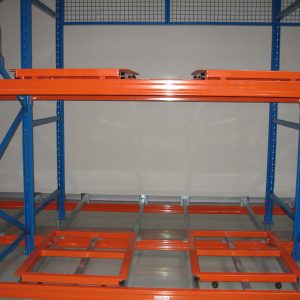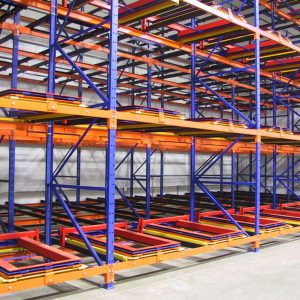INTRODUCTION
Push back racking is a storage rack that has high density. The push back racks are designed for dense storage. The pallets are placed on the push back racks with the help of lift trucks. With the help of lift trucks, pallets are placed over the carts and then pushed back into the rack. When the first pallet is pushed back, the second pallet is being loaded and the procedure goes on. The push back racks boost the handling time as well as the rotation of the products is also increased. As compared to the drive-in racking systems, push back racks can store a greater number of pallets. These racks offer approximately 90% storage. This is one of the reasons why dynamic pallet storage systems are in trend.
PUSH BACK RACKING
• The CAD design service will be provided by us which would be free of cost for sure.
• Customers will also get technical support.
INFORMATION REQUIRED
If you want a quick quotation, then you need to provide the below-mentioned details–>
• Drawing of the racks. This is optional. You can give drawings if available.
• Dimensions of the warehouse in millimeters.
• Dimensions of the pallets along with the loading weight.
• The number of bays as well as layers you want in the rack.
• Color of the rack.
SALES SERVICES
• The complete design service will be provided by us.
• The drawing will be confirmed by the customers for sure.
AFTER-SALES SERVICES
• The product comes with a warranty period of one year.
• If there are any defects in the quality of the product, then the supplier would be responsible for covering the losses.
• In case of any damages, the customers can contact the supplier. The supplier will solve all the issues. Moreover, the supplier will instruct the customers for repairing the damaged products.
-

 Read MoreQuick View
Read MoreQuick ViewPush Back Racking
Push Back Racking
Push Back racking is high density storage rack designed to allow for both selectivity and dense storage.
Push Back racking work like the pallet is placed by the lift truck onto a “cart” and then “pushed back”
into the rack by the next pallet being loaded into the rack system.
 English
English 简体中文
简体中文